Related Research Articles


The Illawarra Steam Navigation Company was a shipping company that serviced the south coast of New South Wales, Australia from 1858 to the early 1950s. It was formed through the amalgamation of the General Steam Navigation Company, the Kiama Steam Navigation Company and the Shoalhaven Steam Navigation Company, each of whom serviced parts of the south coast with their respective vessels. After merging, the new company held a near monopoly in regard to shipping on the south coast, and their fleet visited every significant port between Sydney and the border of Victoria. The company transported both passengers and a range of produce, including livestock, and hence it became known as the 'Pig and Whistle Line': it was said that ships would wait an hour for a pig but not a minute for a passenger.
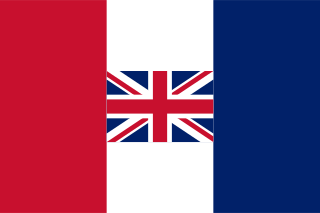
P Henderson & Company, also known as Paddy Henderson, was a ship owning and management company based in Glasgow, Scotland and operating to Burma. Patrick Henderson started business in Glasgow as a merchant at the age of 25 in 1834. He had three brothers. Two were merchants working for an agent in the Italian port of Leghorn; the third, George, was a sea captain with his own ship.

TSS Maianbar was a coastal steamship of the North Coast Steam Navigation Company. Built in Scotland in 1910 she ran aground in Newcastle, New South Wales in 1940 and was later scrapped on site.
Silvanus was a steam tanker built in 1920–1921 by the Southwestern Shipbuilding & Drydock Company of San Pedro for the Anglo-Saxon Petroleum Company with the intention of transporting oil and petroleum products between Dutch East Indies and various destinations in Europe and the Far East. The tanker was employed in this capacity through the first part of 1926. In April 1926 Silvanus collided with the tanker Thomas H. Wheeler in the Mississippi River, resulting in the explosion and death of 26 seamen. Silvanus was declared a total loss and sold at auction to the newly formed Petroleum Navigation Company of Texas. The tanker was rebuilt and renamed Papoose and started operating in March 1927. In March 1942, she was attacked by German U-boat U-124 off the coast of North Carolina. The ship drifted for several days and eventually sank in 200 feet (61 m) of water off Oregon Inlet.
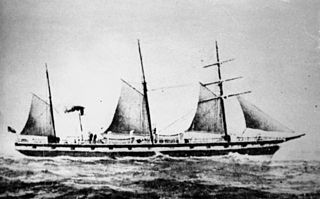
SS Gothenburg was an iron-hulled sail- and steamship that was built in England in 1854 and sailed between England and Sweden until 1862. She then moved to Australia, where she operated across the Tasman Sea to and from New Zealand until 1873, when she was rebuilt. After her rebuild, she operated in the Australian coastal trade.
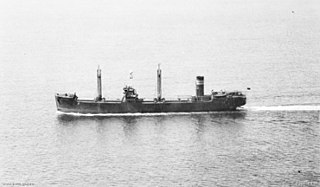
SS Iron Knight was a bulk carrier that was built in Scotland in 1937 for the Australian Broken Hill Pty, Ltd (BHP) to carry iron ore. A Japanese submarine sank her by torpedo off the coast of New South Wales in 1943, killing 36 of her crew. A wreck that was identified as that of Iron Knight is protected by the Australian federal Underwater Cultural Heritage Act 2018.
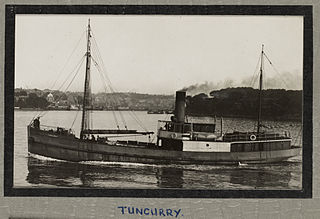
The Tuncurry was a wooden carvel screw steamer built in 1903 at Cape Hawke in the Australian state of New South Wales, that was wrecked when she sprang a leak whilst carrying explosives, cement, whiskey, jam and other general cargo between Sydney and Brisbane. She was lost off Barrenjoey Head, Broken Bay, New South Wales on 22 October 1916.
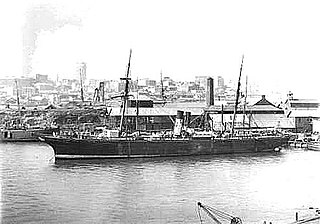
City of Adelaide was an iron-hulled ship that was launched in Scotland in 1863, spent a long career in Australian passenger and cargo service, and sank off the coast of Queensland in 1916. She served with several Australian shipowners, including the Australasian Steam Navigation Company, Australasian United Steam Navigation Company and Howard Smith Company.

The Koonya was a wood carvel screw steamer built in 1887 at Hobart, that was wrecked when it stuck the shore at Doboy reef whilst carrying passengers & cargo between Moruya and Sydney and was lost off Cronulla Beach, Port Hacking, New South Wales on 25 January 1898.
The SS Gairsoppa was a British steam merchant ship built in Jarrow and launched in 1919. After a long civilian career, she saw service during the Second World War. She was named after the town of Gerusoppa on the banks of River Sharavati in Karnataka, India, which due to its easy access to water transportation and as a distribution centre for crops including pepper, was the commercial capital for centuries.
HMAS Coogee was a passenger ferry that briefly served as a Royal Australian Navy armed patrol vessel and minesweeper in the latter part of the First World War. She was launched in 1887 and scuttled in 1928.
Wollongbar was a 2,005-ton passenger steamship built by the Ailsa Shipbuilding Company, Troon in 1911 for the North Coast Steam Navigation Company.

The North Coast Steam Navigation Company was a shipping company that operated in Australia, formed as the Grafton Steam Navigation Company in 1855. The company was later renamed the Clarence & Richmond River Steam Navigation Company before being renamed in December 1888 as the Clarence, Richmond & Macleay River Steam Navigation Company.
SS Iron Chieftain was a bulk carrier that was built in Scotland in 1937 for the Australian Broken Hill Pty, Ltd (BHP) to carry iron ore. A Japanese submarine sank her by torpedo off the coast of New South Wales in 1942, killing 12 of her crew. Her wreck is protected by the Australian federal Underwater Cultural Heritage Act 2018.

SS Iron Crown was a 3,353 GRT Australian iron ore carrier which was sunk during World War II by a Japanese submarine.

USCGC Chelan was a Lake-class cutter belonging to the United States Coast Guard launched on 19 May 1928 and commissioned on 5 September 1928. After 13 years of service to the Coast Guard, she was transferred to the Royal Navy as part of the Lend-Lease Act, and named HMS Lulworth (Y60). During the war Lulworth served in a convoy Escort Group for Western Approaches Command
SS Benlomond was a British cargo steamship that was built in 1922 as Cynthiana, changed owners and names a number of times, and was sunk by a U-boat in 1942, with the loss of all but one of her 53 ship's company. The sole survivor, Poon Lim, drifted on a raft for 133 days before being rescued.

SS Myola was a 655-ton screw steamer, 55 metres long, built in Middlesbrough in the United Kingdom. Myola, could unfurl sails on her two tall masts and gain a knot or so of additional speed when the wind suited.

SS Canonbar was a steam cargo ship built in Ardrossan, Scotland in 1910 for the North Coast Steam Navigation Company, and used in the Australian coastal trade. During World War II, she was part of the US supply fleet in the Pacific Ocean. From 1949, she was Rosita, until 1960, when she was renamed Valiente. Under the name Kettara IV, she was sunk by shell fire off the Vietnamese coast in 1966, with the loss of her entire crew.
References
- ↑ "ss Wollongbar (1922)". Clyde Built Ships Database. Archived from the original on 30 August 2011. Retrieved 27 September 2011.
{{cite web}}: CS1 maint: unfit URL (link) - ↑ "North Coast Steam Navigation Company". Flotilla Australia. Retrieved 27 September 2011.
- ↑ W. J. Mason (22 November 1945). "S.S. Wollongbar Sunk By Torpedoes". The Daily Examiner . Vol. 35, no. 8946. New South Wales, Australia. p. 2 – via National Library of Australia.
- ↑ Witoslawski, Ashlea (27 April 2020). "Shipwreck found off NSW Mid North Coast". Australian Associated Press. Archived from the original on 27 May 2020. Retrieved 27 April 2020.